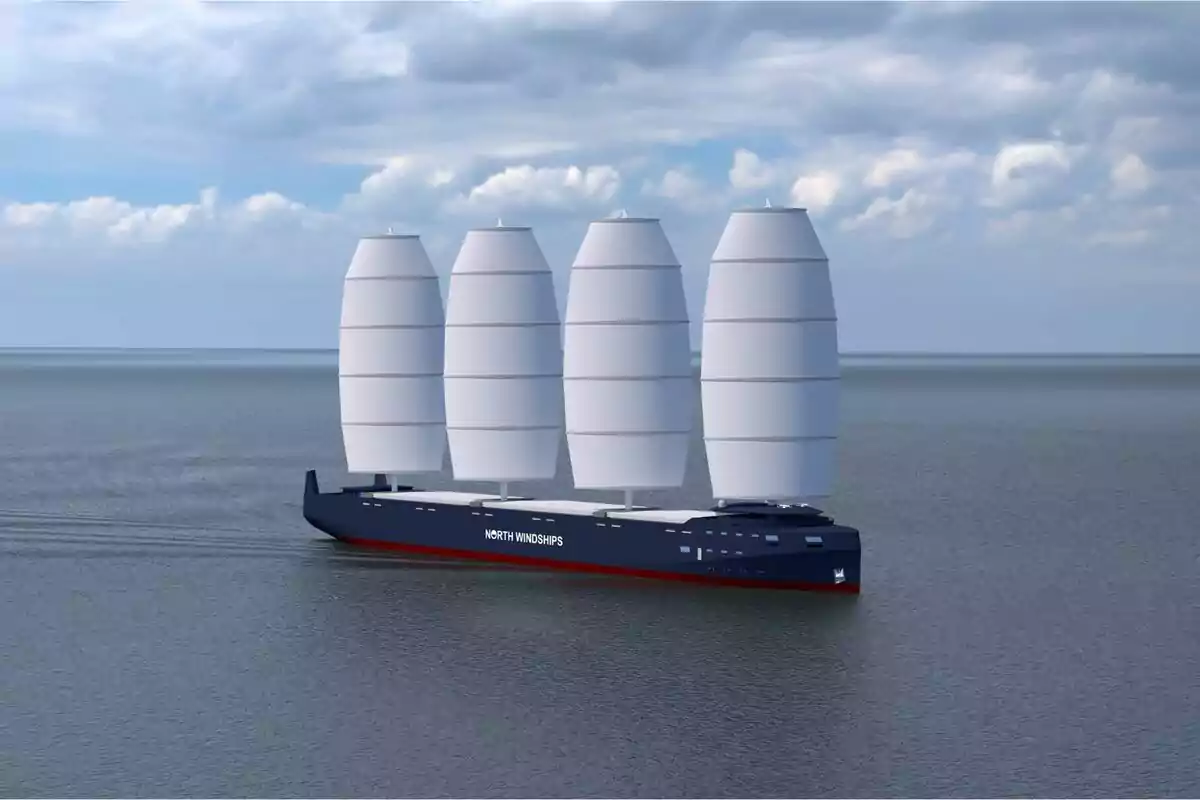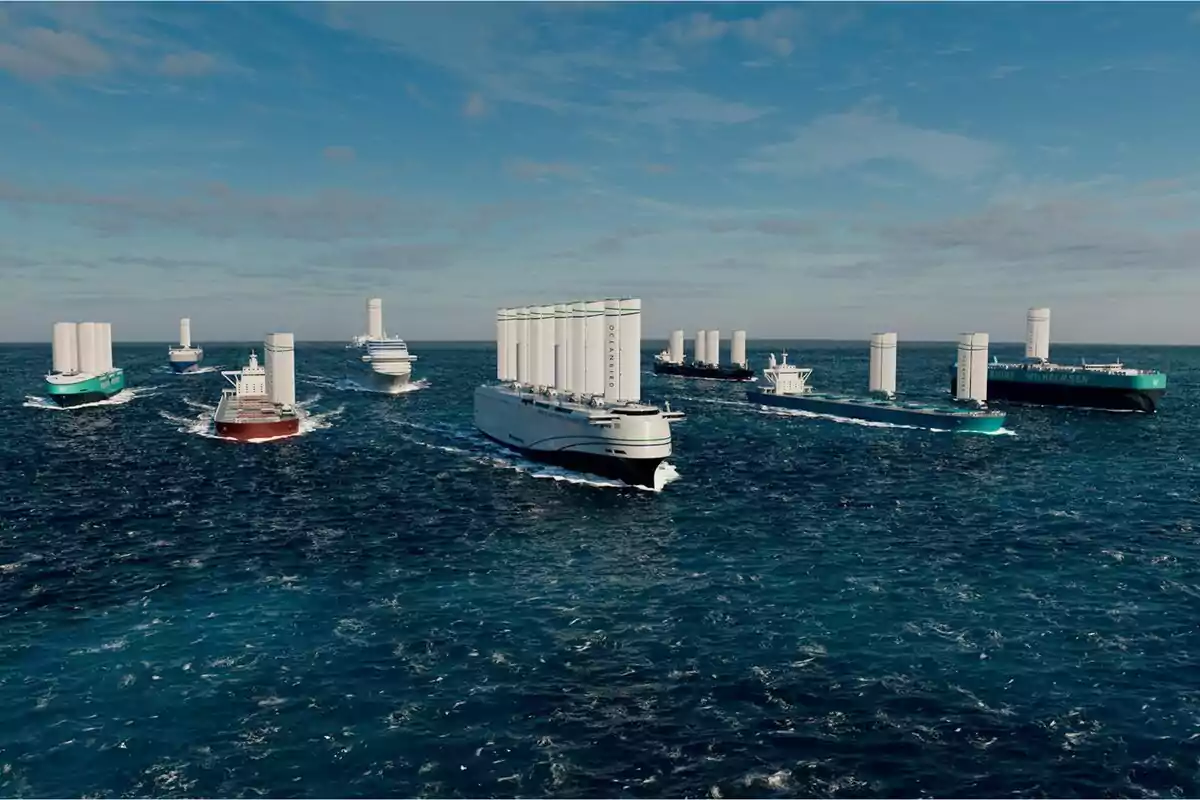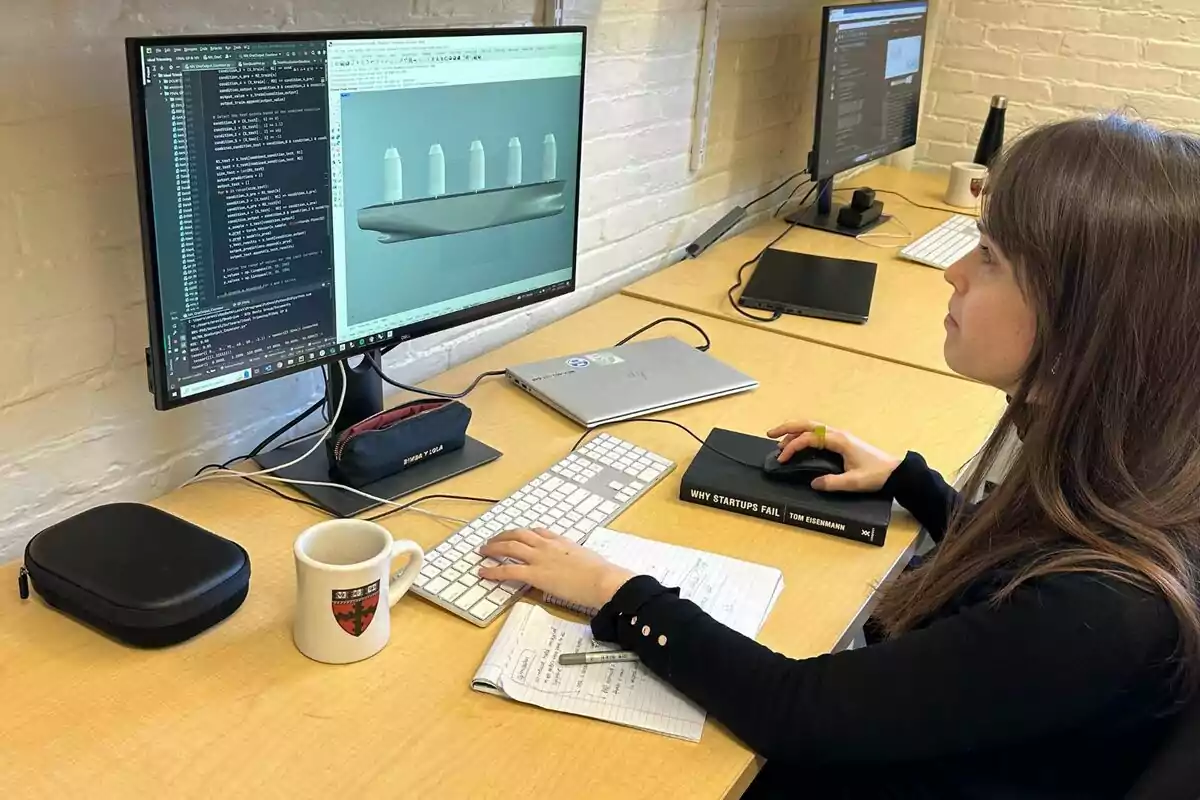Naval engineer Martina Reche Vilanova from Sant Joan de les Abadesses (Ripollès) has developed a pioneering computer program, the first in the world capable of determining how many sails, of what type, and at which point on the hull they should be placed so that merchant ships can reduce emissions as much as possible with the lowest investment.
The program is the result of her doctorate, which she developed over three years with the sail-specialized multinational North Sails and the Technical University of Denmark and Harvard. She has replied to the naval sector, responsible for 3% of annual global emissions and which—as set by the International Maritime Organization—is seeking solutions to reduce CO₂ emissions by 40% by 2030.
In 2021, the doctoral project
"Wind Propulsion Systems for Commercial Ships: Modelling, Design and Cost Optimization" by naval engineer Martina Reche was awarded at COP26, the climate summit held that year in Glasgow. Specifically, she received the Proposed Research Award, one of the seven categories of the Wind Propulsion Innovation Awards.

Four years later, this idea is a reality. It has materialized in the first global-scale computer program capable of predicting in minutes the optimal configuration for installing sails on merchant ships, to maximize efficiency and do so with minimal investment. All with the ultimate goal of reducing the vessel's fuel consumption and emissions.
In detail, the software developed by Reche determines the most suitable number and model of sails, depending on each vessel and the route it usually sails. In addition, it can predict the ideal location for installing the sails on the hull to maximize performance, taking into account how they interact with each other and with the hull itself.
"The range of possibilities is enormous, and I've discovered that where you install the sail on board has a huge impact on fuel savings because it interacts with the hull," says Martina Reche, who insists that "it's very important to know exactly where the sail should be installed, because the cost of buying it will be the same and depending on where you put it, you'll save more or less."
This cutting-edge program represents a major breakthrough for the naval sector, which, as the engineer from Ripollès explains, "is experiencing one of the most important technological revolutions of the last century." "The most significant was the introduction of the combustion engine at the end of the 19th century, and now it's going through the sustainability revolution, seeking options to reduce emissions and achieve 'green ships'," she details.
"We have separate research on sailing navigation and on merchant ship navigation with fuels, but there's little that explores how they interact," says the engineer, who adds that this is where the importance of the software she designed lies: "it's necessary to research how they work together in order to move forward toward reducing emissions."

Paying to pollute
The maritime sector is regulated globally by the International Maritime Organization (IMO), which currently sets emission reduction criteria to help combat climate change and its effects. Merchant vessels must comply if they don't want to be penalized financially.
Looking to the future, it is established that the sector's average global CO₂ emissions must have decreased by 40% by 2030 and by 70% by 2050. In addition, greenhouse gases must also be reduced by 50% by 2050. All compared to 2008. Since 2025, ships sailing in European waters have started paying taxes in the European Union according to the emissions they generate.
It should be noted that the naval sector is responsible for 3% of annual global emissions. "Most of the products we buy are transported by ship: it's a very large industry, with a very large associated environmental impact as well," explains Reche, who insists that "that's why it's so important for them to become more sustainable."
Reducing emissions using wind
One of the solutions currently on the market to reduce these emissions is to use wind power, "as was done in the past, but with today's technology, which is much more efficient." This is the energy that naval engineer Martina Reche has been working with during the three years of her doctorate, which she completed with the sail-specialized multinational North Sails and the Technical University of Denmark (DTU).
In addition, Reche spent half a year working side by side with a team from Harvard University specializing in artificial intelligence (AI), who supported her so the program would be more efficient. "The goal was to develop a program that would quickly and carefully predict what forces the sail would exert in different wind directions and according to the type of sail," says the engineer, who adds: "I went to Harvard because I wanted to implement AI, but I'm not an expert."
This implementation, combined with all her research, has made it possible to change what fuel-saving prediction programs for vessels could offer up to now and to present a completely new one. "Before the program, you could predict how much you would save by placing a sail on a hull for a specific route, but you had to choose which sail you put on and where you placed it," explains Reche, who says that "now, the program determines what's best for a specific route and ship."
One of the program's strengths, according to the engineer, is the speed with which it makes predictions. "It allows us to achieve in minutes the same level of accuracy that previously required simulations lasting several days," explains Reche, who adds that "thanks to this model and the implementation of AI, now it's possible to determine the optimal configuration for installing sails on a specific merchant ship for an entire route in less than a day." A process that without the program would take months.

